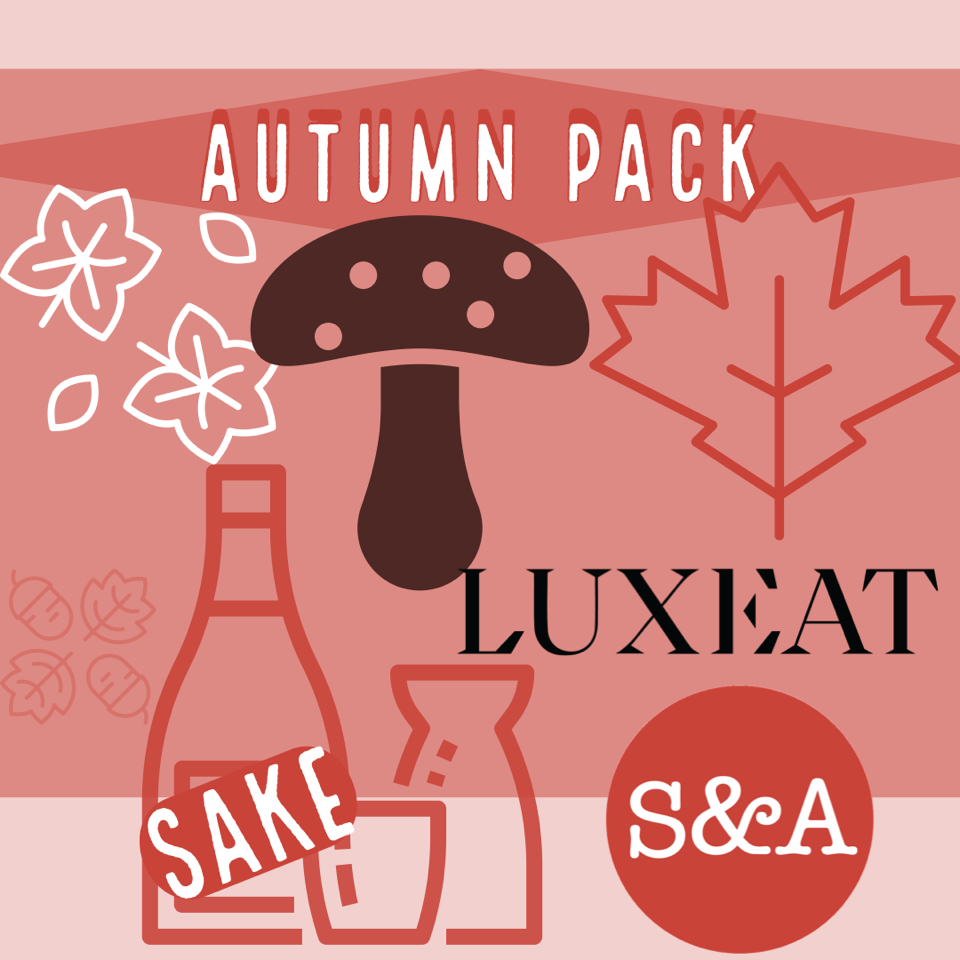James Beard Award winner, Nancy Singleton Hachisu is an expert of unique and authentic Japanese cuisine. Born and raised in California, she first went to Japan over 32-years ago where she now lives on a farm with her Japanese husband and their family.
The best season to enjoy Sake
By Pablo Alomar Salvioni
More than a month has passed since SAKE DAY, a yearly celebration of sake that takes place on the first of October. This observance marks the beginning of the brewing year thanks to the newly harvested rice. Autumn is undoubtedly sake season.
Fresh Fresh sake.
In a few weeks time we will enjoy this year’s first brews, (shiboritate, hatsu shibori, shinshu) the freshly pressed sakes, usually unpasteurized (NAMA). Sake must be pasteurized after pressing and before being shipped, so they run a two pasteurization process in order to avoid enzymatic action of bacteria and yeast, which can ruin a sake, especially when heat triggers the sleeping bacteria and yeast. However in cold months and if we keep the sake in low controlled temperature we can enjoy them super tasty and fresh… almost like drinking it from the tank in the kura.
Autumn sake: Hiyaoroshi
Sake making can take one month, so it means that November is the month the first batches are distributed to shops. However since September we are able enjoy the proper Autumn sake called HIYAOROSHI, from a previous brewing year (BY) —produced in spring and pasteurized just once, then released without the second pasteurization at the end of the summer. It’s ready for the beginning of autumn for the joy of sake enthusiasts all over the world.
Probably the best season for sake enjoyment
So putting in frame …fresh new sake , unpasteurized sake, hiyaoroshi, and cold weather we can say that fall and winter are an amazing time to enjoy all sorts of sakes with all types of amazing seasonal products. And on the other hand we have the opportunity to try Kanzake ( Or warm sake) , a delightful sip while it is cold outside.
Tips to enjoy sake in the fall
Gastronomy
Luckily for many people including myself, we tend to find that autumn is heaven for food lovers. Truffles, mushrooms, game… to name a few, are involved in the copious fall meals to combat the cold. And make great matches to a suitable sake—slightly powerful and full bodied. Or sometimes we would need to compensate, with a refreshing sake, others we would rely on serving it at a warmer temperature, so the umami expands. But in general we can benefit from the fall flavours with sake in a very pleasant way.
Warm sake
It’s cold outside and we want to get warm, nothing better than Kanzake (heated sake) in the cold months…Still somehow associated with bad sake, warm sake is an agreeable alternative to Reishu (cold sake ). By warming up sake, we can even get it much mellower than cold sake, for instance some Kimoto, taruzake, aged or very rustic Junmai-shu types of sake are perfect warm. Comically, even the alcohol sensation can be lowered by heating it up. The overall result is an umami bomb that can work well even with meat dishes. Japanese would order warm sake by a specific term according to the temperature. To name a few, we are talking of NURU KAN ( lukewarm, 40Cº) JO KAN ( warm 45Cº) , ATSU KAN ( hot 50Cº). The difference of 5Cº in heat can be a big deal, so I encourage to get a ceramic tokkuri filled with sake, and put it on a hot water pan (If you don’t have a professional Kansuke) and check the temperature with a thermometer stack in the tokkuri….lot of fun!
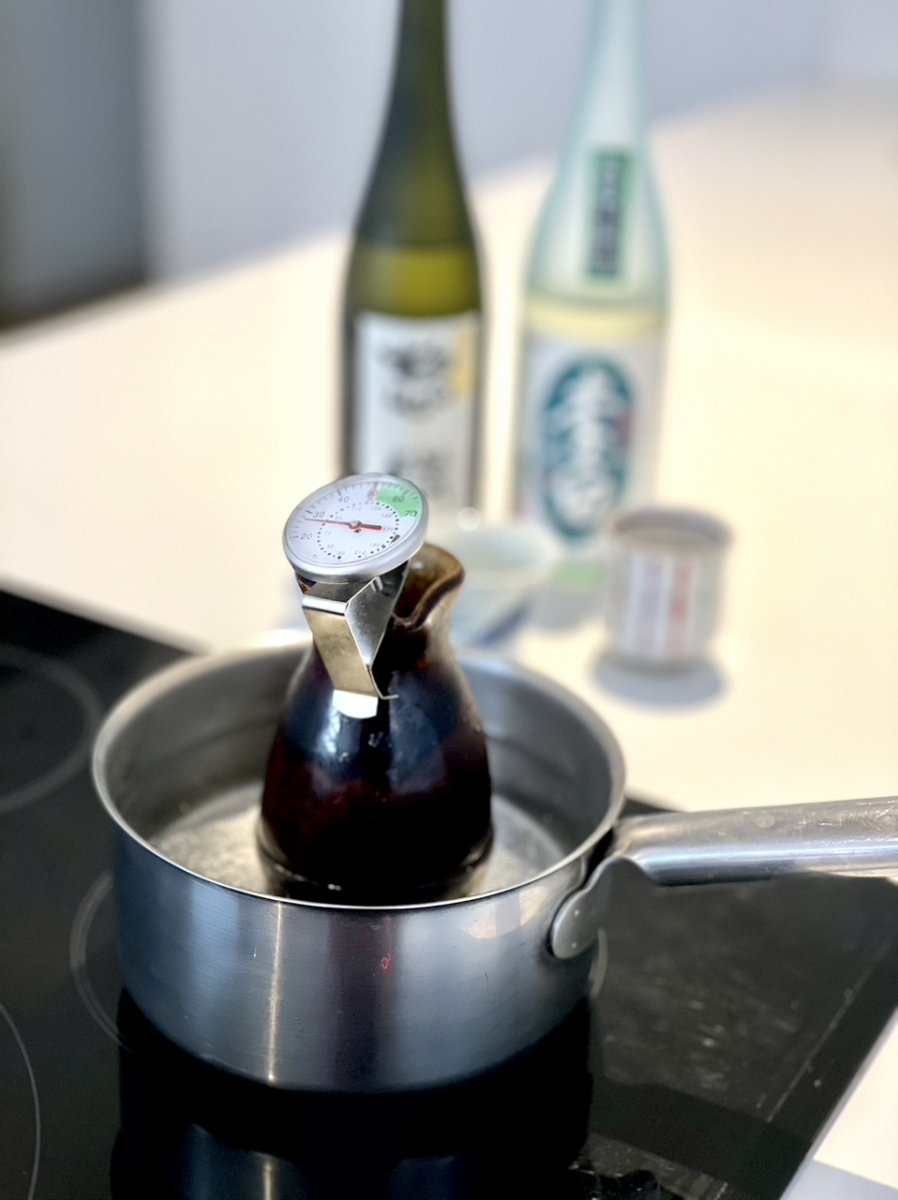
Display the various vessels
As we can play with different temperatures, we can use different vessels to serve the sake. A great chance to display our beloved collections and benefit from the resulting flavours depending on the shape, material or size.
O-choko
The traditional sake cup is a small cup ( 50-70 ml). Pottery, wood or metal is normally used for warm sake or for Japanese hospitality, must be poured carefully with both hands, as a manner of respect to your guest, and you can not serve yourself in front of others. The different vessels can make the sake taste in a certain way, so thick pottery makes the sake full and thin porcelain cups can make the sake taste light.
There are some made out of tin, and are really nice as they work very well as thermal conductors.
Normally we would use a Tokkuri (carafe) to pour the sake into the O-choko. The size and shape can be determinant upon the taste, so if it’s a very open O-choko, it will feel less concentrated and probably less alcoholic, compared to the less open sized cup, that could make the sake taste deeper and slightly alcoholic.
Wine Glass
Perfect for cold and aromatic sake, it enhances the drink to develop the aromas into the glass and evolve much more than in a traditional sake cup. Also sake lovers that cannot wait to get their little o choko refilled benefit from drinking sake from a wine glass as normally we have more that 60 ml served at once…so the pleasure stays at hand a little bit longer…
We are in love with the Austrian company Riedel , which over the years developed sake glasses, specifically made for Ginjo sakes (vertically longer and ball shaped glasses) to express the aromas of the ginjo sakes and for the Junmai-Shu sakes (larger and wider shape emphasizing the creamy texture and longer finish of the Junmai-shu sakes).
In Japan we have Kimura, a century old quality glass maker for their elegance and lightness. These super thin, lightweight, glasses, elevate the taste of sake in a remarkable way.
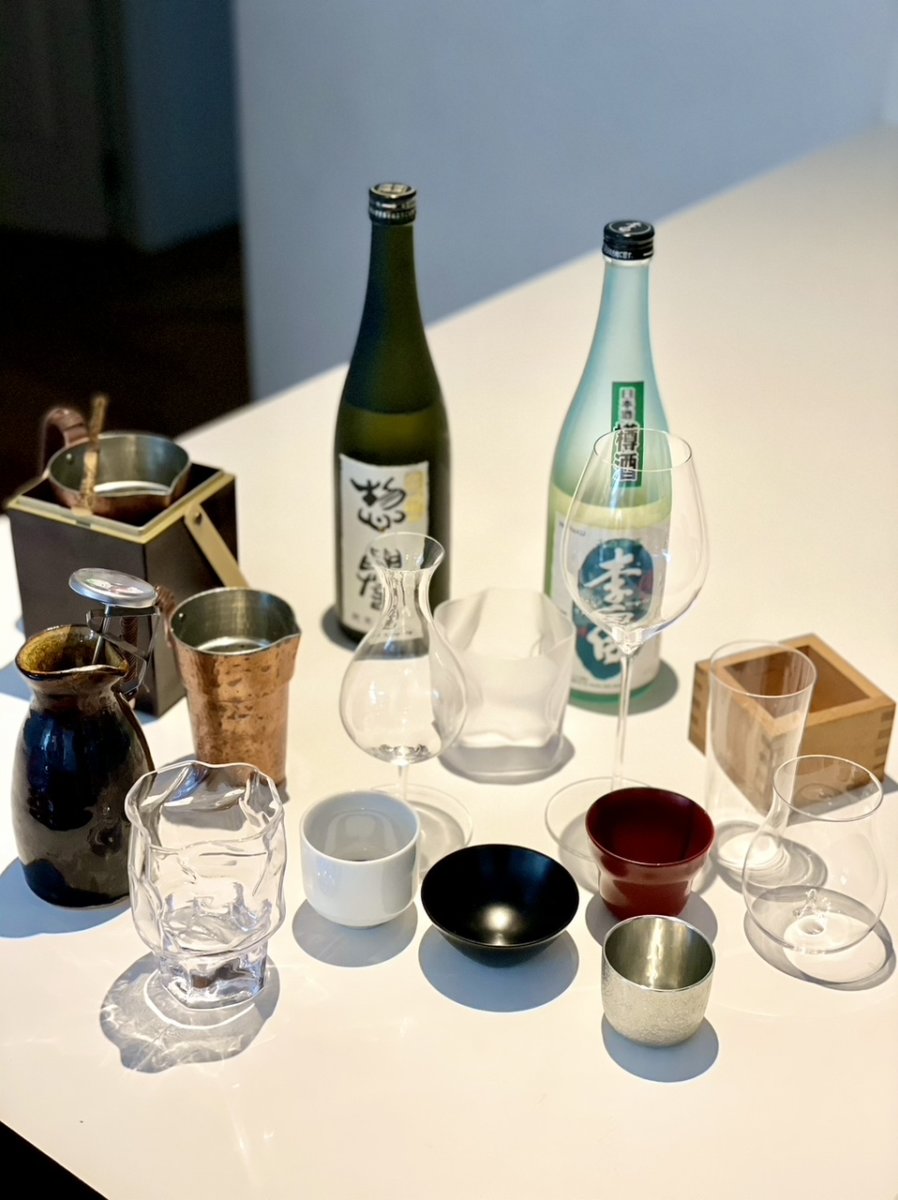
The sakes
We have put together an eclectic mix of different sake genres for you to enjoy during the season. Some are meant to be drunk cold, others at room temperature or even hot.
A special “Autumn pack” of Sakes to celebrate this season you can purchase HERE.
The pack includes 5 sake bottles which are listed below and can be delivered only in Europe.
STYLE: KIMOTO – Sohomare Kimoto Dai Ginjo
Sohomare has been producing sakes since 1872 in Tochigi prefecture under the Kono family. A good example of a small brewery keeping traditions and the current president is fifth generation, they have been dedicated to the production of a sake very characteristic of the area with the finest Yamada Nishiki harvested in the Premium A area in the Yokawa region of Hyogo Prefecture. They also master the old Kimoto technique. This brewery makes sakes that can age very well and almost all of their sakes have a macho sort of approach, but with an elegant touch.
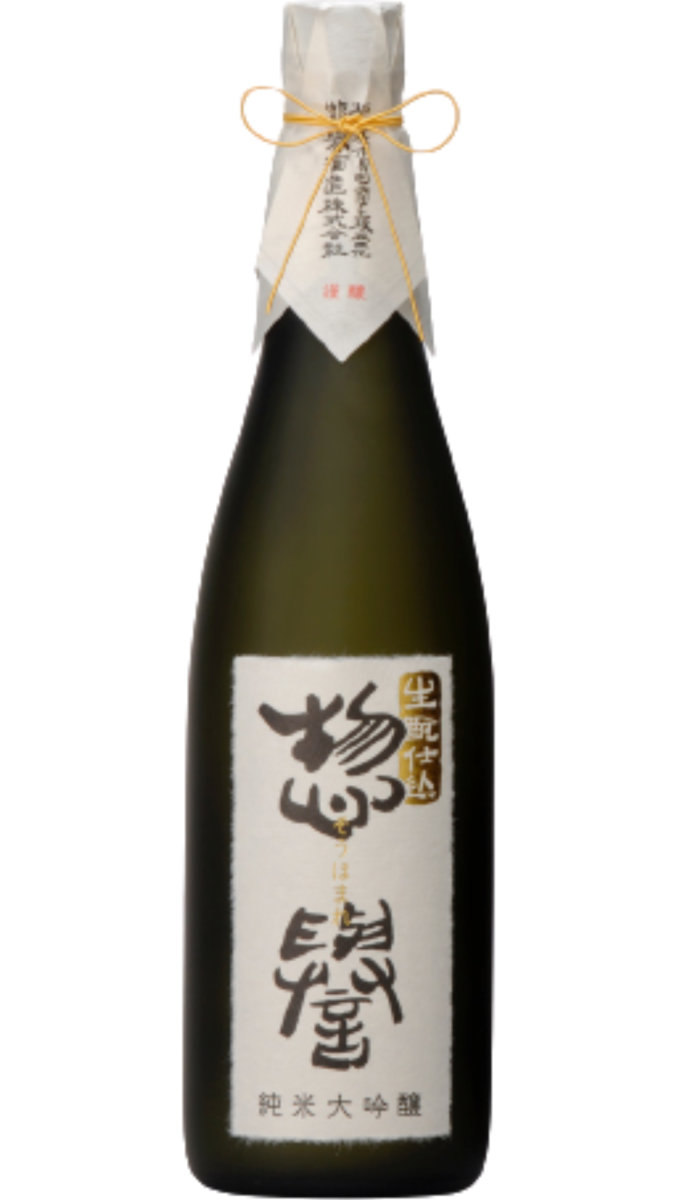
Sohomare Kimoto Dai Ginjo
RICE: Yokawa and Tojo Yamada Nishiki
POLISHED: 45%
ALCOHOL: 16%
This sake is carefully brewed using the traditional Kimoto method (one of the oldest methods of making sake, pounding with poles) Apart from the typical characteristic of a Kimoto method sake (complexity and power) It’s a little bit softer and has an slightly creamy entry on the palate that gives way to a profound mid-palate density and elegant aroma. Notes of anis, banana skin, and lactic sensation. It could be defined as a type of sake very “umaminous” at the same time feeling almost tannic and full. It will age for several years. It is best served at 12 to 15 Cº. Ideal with a slow cooked meat casserole, suckling lamb, Sauerkraut….and mushroom dishes.
STYLE: KOSHU – Endo Keiryu Aged sake
Endo Keiryu was founded in 1864 as a kind of Royal Warrants of Appointment to the local Shogun of Suzaka in Nagano prefecture, this local brewery produces various types of sake, but we were thrilled with their amazing koshu. Endo san, the current president told us that aging sake is like caring for a child from when they are born and seeing them grow healthy and strong, in order to spread the good sake making skills of the people involved in the past and keep the heritage for the future.
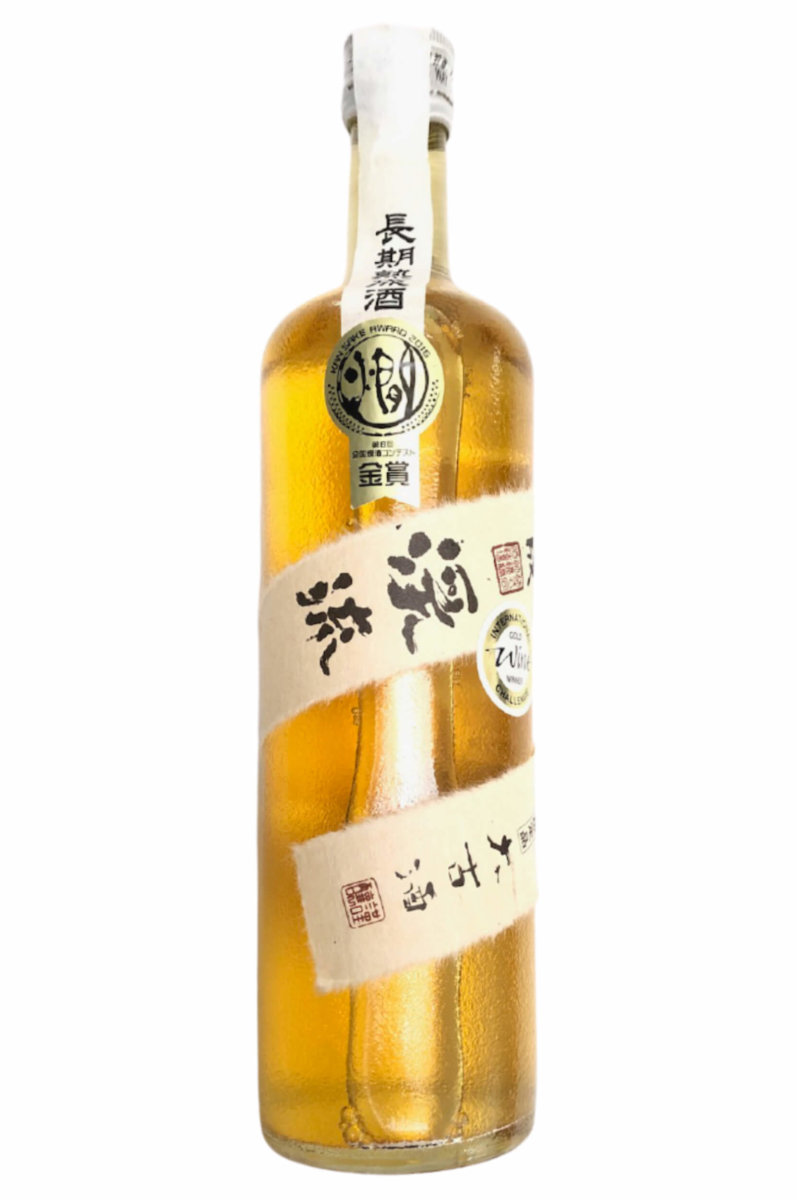
Endo Keiryu Koshy
RICE: Miyama Nishiki
POLISHED: 60%
ALCOHOL: 16%
This particular sake has been ageing since 1999, from a blend of a 1989 and 1999 tank. Compared to fresh sake, it takes on deeper hues of gold and amber. Compared to the light, floral hues of fresh sake, here we can find hints of caramel, nuts, or even savoury soy sauce. It smells one way and tastes completely different, with a very hard to understand balance between sweetness and acidity, that makes this sake really interesting, specially for sherry lovers, as somehow they have something in common. It is best served at 15 °C, Ideal with rognon de veau, Callos a la Madrileña, Boeuf Bourguignon, Venison in salmi….
STYLE: NAMA – Fukugen Nama Genshu
Founded in 1758 in Ikeda (Nagano). Fukugen is one of the smallest breweries that still exists in Japan. Run by the same family, Hirabayashi san, who, since its inception, have jealousy maintained the tradition and sake making skills from generation to generation. Mr. Hirabayashi is currently the 17th generation and soon his daughter Seiko will take over. One of the most artisan breweries we work with, they even grow the rice used organically producing sakes only in the cold months. The staff works the fields in summer and in the brewery in winter, keeping the staff employed all year round, an exceptional thing in the sake world!
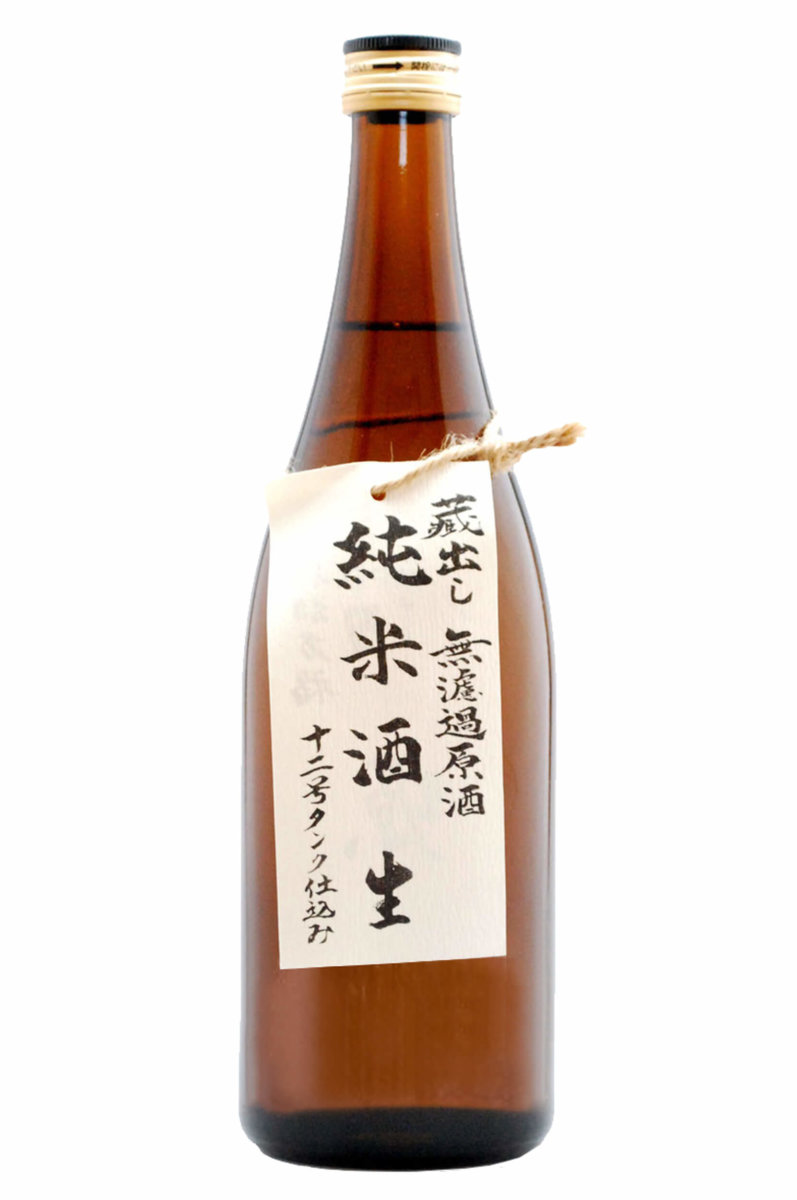
Fukugen Nama Genshu
RICE: Hitogokochi
POLISHED: 59%
ALCOHOL: 16%
This sake is one of the few 2020 nama we could get this year and is also genshu and murouka. Genshu means a sake that has not been diluted down in the water. Murouka means a sake that is not filtered with charcoal, which can result in a slightly hazy appearance. So basically, we are talking about sake with little intervention, giving a sort of natural and local taste, unpolluted by the new fancy sake trends. It’s mellow and elegant but with character and has the peculiarities of unpasteurized sake (glue and smoked aromas) and the reminiscent of a certain alcoholic strength that is diluted in sweet sensations. Alcohol is lower in this Genshu at 16% ( normally are above 18%) because it has been fermented at a very low temperature, and for a longer period. A complex very well-balanced full body and rich type of sake. It is best served cold at 10 to 12 °C or at room temperature. Ideal chawanmushi, truffle dishes, soft cheese, iberico ham, caviar…
STYLE: JUNMAI DAIGINJO – Dassai 23
DASSAI is one of Japan’s most famous brands nowadays, but its history was not always glamorous. Founded in 1774 in the countryside mountains of Yamaguchi prefecture. Up to the 80S, this kura was making cheap sake for the local market, but when Hiroshi Sakurai took over his father company had a dilemma, close down the company or innovate and create a new sake based on quality. He decided to start producing only Junmai Dai Ginjo sake and in the 90s created the new brand called Dassai. With a lot of effort and personal commitment he went to Tokyo to promote his new sake …Dassai 50, and then revolution began with the Dassai 23, the first sake that was polished down to 23% ( 7 days of continuous polishing) often featured on TV and many publications for what is maybe Japan’s first most extravagant rice polishing ratio. Now there are others that went even further, but Dassai is still leading the bid of quality sake.
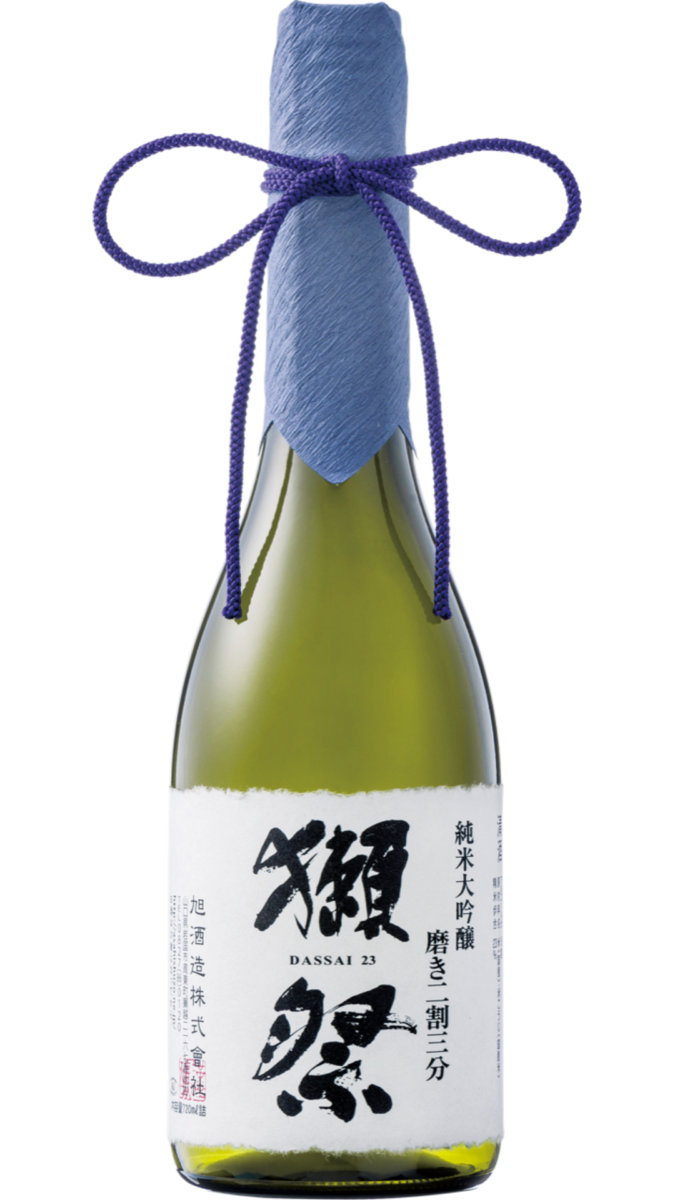
Dassai 23
RICE: Yamada Nishiki
POLISHED: 23%
ALCOHOL: 16%
A milestone sake. Pure liquid silk. This sake has been milled to 23% and it is in a class of its own. With pear like refreshing aroma, flowers and anise the flavor is as luscious as the aroma. Dassai is a clean, incredibly silky sake, with a long lasting feeling in the mouth all wrapped in a elegant structure and a sharp aftertaste. It could be compared to the feeling you get from a really nice layered white wine. It is best served cold at 10 to 12 °C. Ideal with Squid Sashimi, Smoked salmon, oysters, simmered turbot, pigeon breast
STYLE: TARU ZAKE – Rihaku Taruzake
Rihaku was founded in 1882 in Shimane. The name comes from the famous Chinese poet Li Po who often found inspiration in sake. It was said that with a bottle of sake he could write 100 poems. Rihaku sake represents Shimane’s quintessence, being a soft, delicate sake with character and with a lot of umami in its essence, so all the sakes they produce are full-bodied sakes and ideal for drinking while eating.
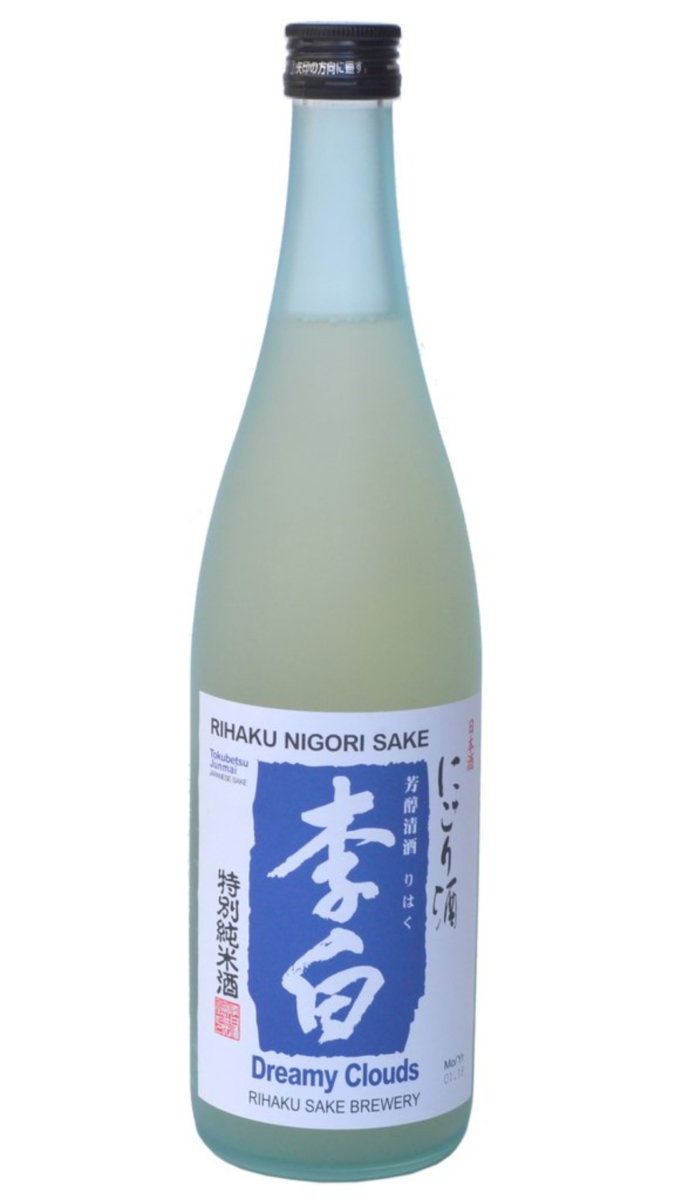
Rihaku Taruzake
RICE: Kannomai
POLISHED: 68%
ALCOHOL 15%
This is our first imported Taruzake, a sake that has been made in wooden cask, as they used to do back in the Edo period. Made with Japanese cedar, the cask gives a nice fragrance to the sake, loved back in Edo times. Very aromatic sake, almost like incense with a cereal and nutty feeling, ideal for drinking from a ceramic or wooden o-choko possibly at Nuru kan temperature. Endless pleasure sip after sip…A good example of how warming up a sake gives a completely new version of the same drink. It is best served at 14 to 16 °C or warm at 40°C. Ideal with Pot au Feu ,Roast beef, Carré D´agneau Roti, Roasted Quail.
A special “Autumn pack” of Sakes to celebrate this season you can purchase HERE.
The pack includes 5 sake bottles which are listed above and can be delivered only in Europe.
For more sake insight and the lowdown on how to best eat and drink sake, check out the ultimate sake pairing guide, that goes into more depth about methods and definitions and of course food pairings.
BY PABLO ALOMAR SALVIONI @pabloalomarsalvioni
Certified CSP and AS& WSETL3 in Sake -WSET Educator.
Basque Culinary Center Sake Expert.
salvioni-alomar.com / sourcingtheearth.com
